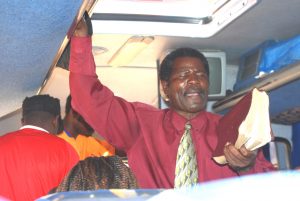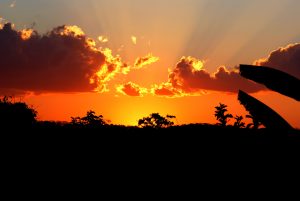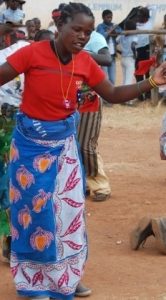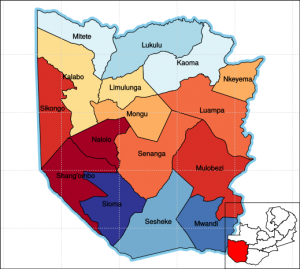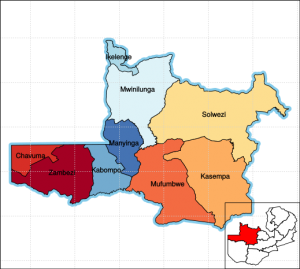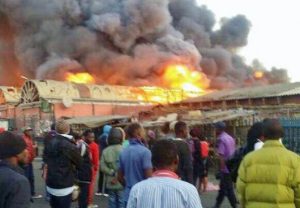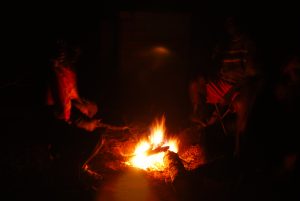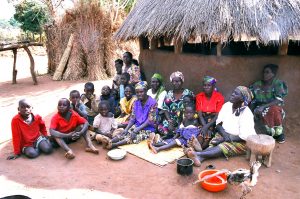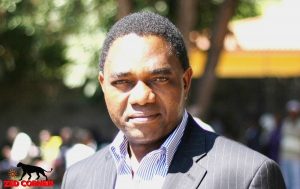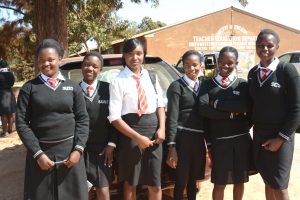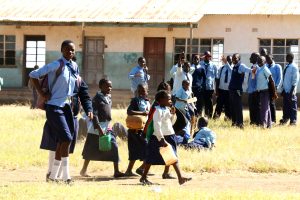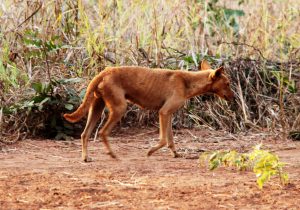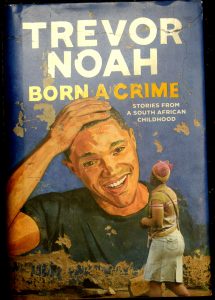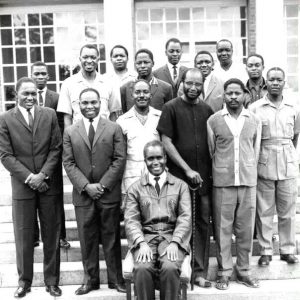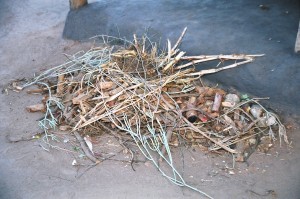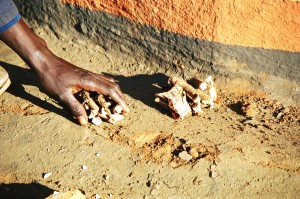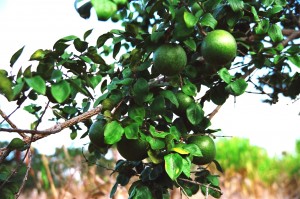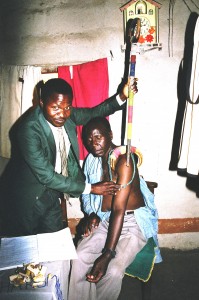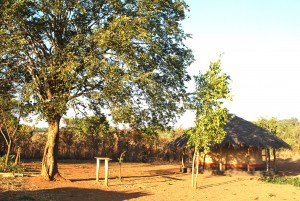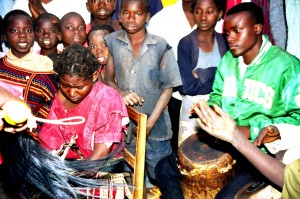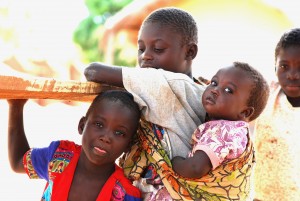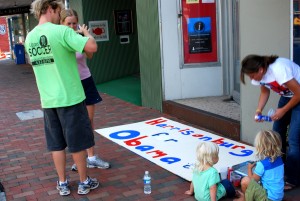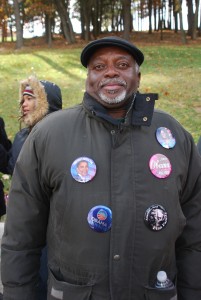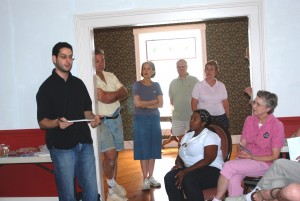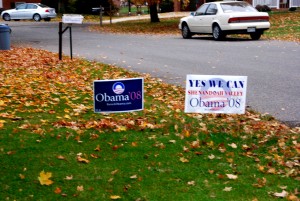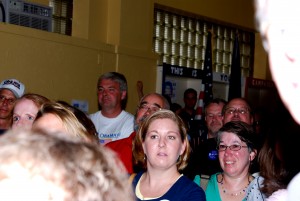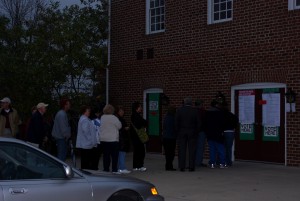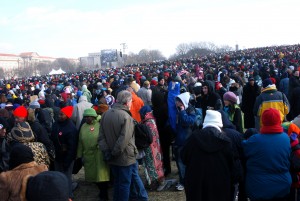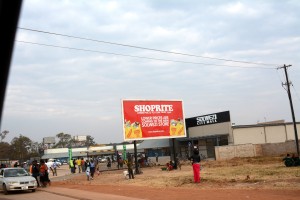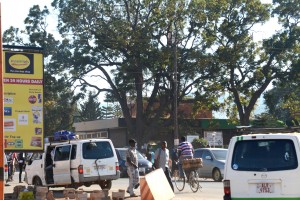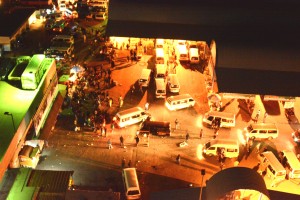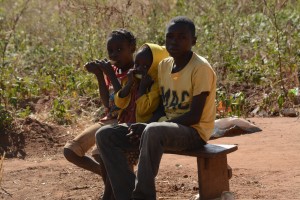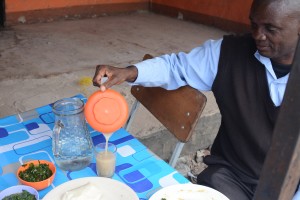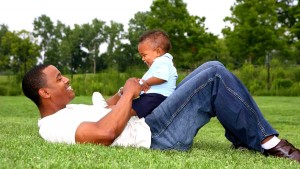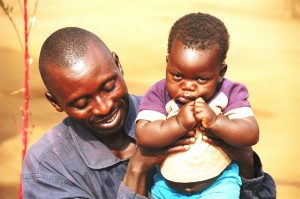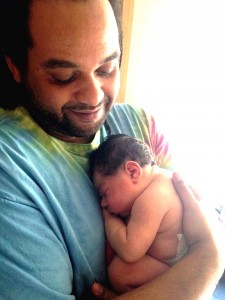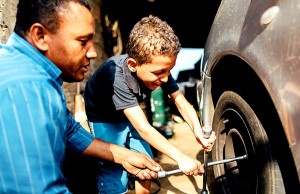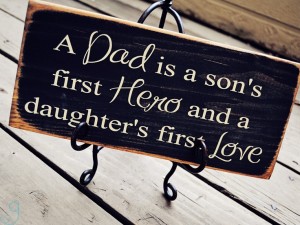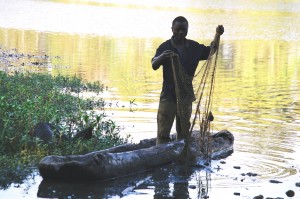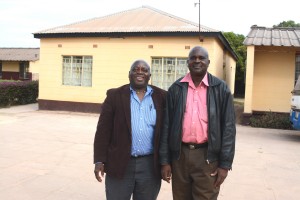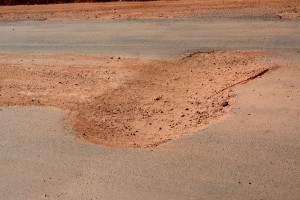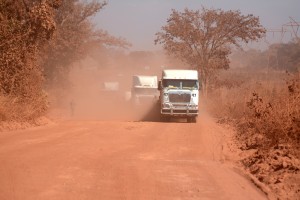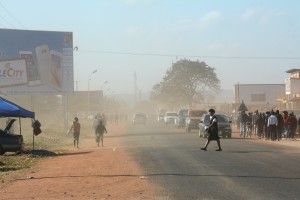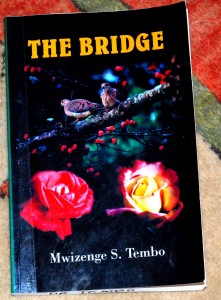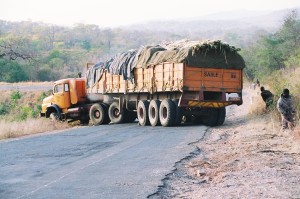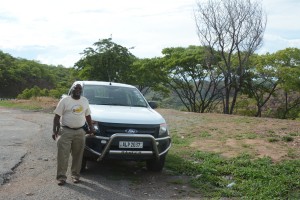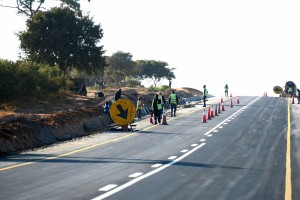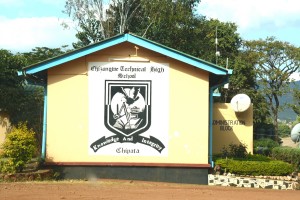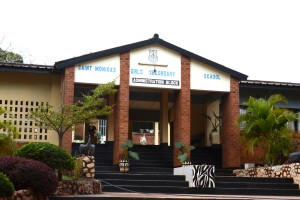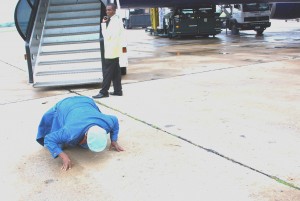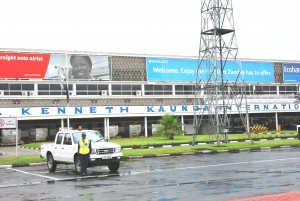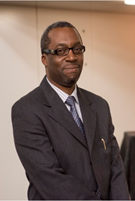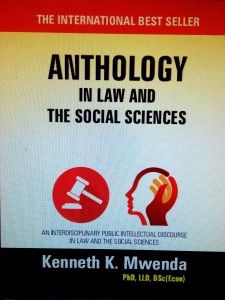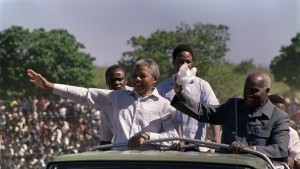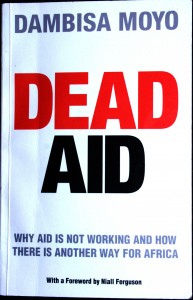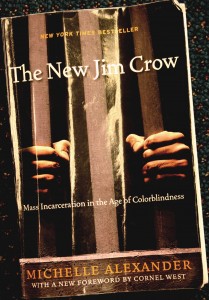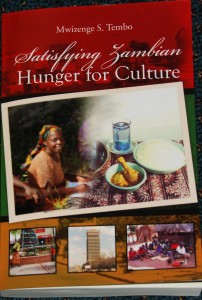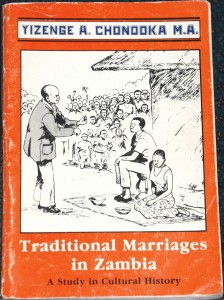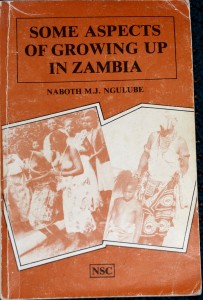by
Mwizenge S. Tembo, Ph. D.
Professor of Sociology
“Amama na Adada, katundu nimzito. Ningasenya nekha yayi” (Mother and Father, the luggage is too heavy. I cannot carry it alone.” – Mwizenge S. Tembo
Introduction
Why is it that from Nouakchott in Mauritania in North-West Africa, through Nigeria to Durban in South Africa; from Cape town in South Africa though Tanzania to Bargaal in Somalia on the Horn Africa through Cairo in Egypt to Benghazi in Libya, people with black or dark skin are regarded as inferior? Why is it that from Chile the Southern tip of South America, through Brazil, Caribbean Islands, Mexico, United Sates and Canada people black or dark skin are regarded as inferior? Why is it that from Europe, through Central Europe, Russia, India, China Thailand all the way to Japan, Banda Sea, Papua New Guinea, Tonga Islands all the way to Australia, people with black or dark skin are regarded as inferior? While Europe was the main culprit in spreading all of this negative beliefs and racist ideology about black Africans, modern genetic knowledge tell us Africans are the origin of virtually all human beings;
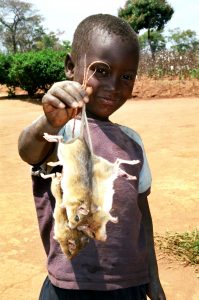
Boy holding Mbeba (mice) in a village in Lundazi district in Eastern Zambia
all 7.5 billion of us today. How is all of this possible?
This article will explore the major aspects of this persistent and deeply embedded belief that people with black or dark skin, where ever the live on the planet are the most inferior. The article will suggest that the best way, not just to think about it in terms of theoretical knowledge, but to actually change this negative belief is to start with Zambia as ground zero or starting point. The determination and urgency about acting on the solution to this serious problem starts now. You should show or give a copy of this document to the President, his cabinet, all leaders of political parties, the Ministry of Education officials and teachers. If you have access to this article print some hard copies and send them to all Chiefs in all rural areas of Zambia. Circulate hard copies of this document to many people among 14 million Zambians especially those in remote parts of Zambia. Those of you who are educated in Zambia and in the Zambia diaspora abroad, and have access to the internet can circulate the document much more easily. The press will already have access to the Principles of Mbebalogy.
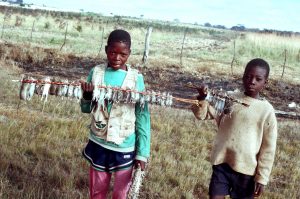
Boys after a mice hunt on the outskirts of Lusaka the Capital City of Zambia.
This article will use the better informed and traditional method of principles of Mbebalogy (or mbewalogy which is a linguistic variation) to suggest that all 14 million Zambians have to dig our past to get rid of deeply embedded racial and cultural inferiority complexes in order to move forward. This will take 27 years for Zambians to both understand and change the incomplete and poor knowledge we have now. It took this author 27 years to discover by accident some of this knowledge you are about to read. This is because in addition to acquiring Western or Eurocentric knowledge, this author also acquired and lived the indigenous or traditional knowledge among the Tumbuka people in the village in the 1950s. This author speaks Tumbuka, Chewa and Nyanja Zambian or African languages and deeply understands and has lived with the customs. As compared to just reading about them. This is very crucial.
President Kaunda founded and ruled Zambia for 27 years. The legendary great fighter against apartheid in South Africa Nelson Mandela was in prison for 27 years before he was released. It took Dr. Chisanga Nebat Siame, political philosopher and self-trained philologist 27 years, to find the important and crucial key to understanding how we Zambians and Africans can today dig real and accurate knowledge about our past so that we can get rid of inferiority complexes in order to move forward. Dr. Siame found the key to understanding our complete and original Zambian African history not because only of acquiring Western Eurocentric knowledge including a Ph. D. but most especially because he is both Namwanga, Bemba, and deeply understands the Zambian and African culture from within. This is very crucial. We will start with deeply examining our indigenous Zambian cultures in remote areas among the 72 tribes, explore knowledge in urban Zambia, and then coordinate this with exploring Zambian history to all the remote and most distant corners of the world. The principles of Mbebalogy happens to be a near perfect analogy and metaphor to explain and strategize how we Zambians will work on this for the next 27 years.
Purpose of Treatise
The purpose of this treatise is three fold. First, to discuss and explore the broader, full, complete, authentic and more genuine Zambian and African history from a hundred thousand to fifty thousand years ago to the present. This approach to Zambian history is the best, most honest and most complete for Zambians, Africans and for all humanity where ever they may be.
Second, besides all other written existing written records that tend to focus on Zambian history since European colonialism in the 1800s, the new approach will focus on the deepest aspects of indigenous Zambian technology, customs, and the knowledge that is treasure our ancestors deeply inscribed and embedded in Zambian languages and traditional names of Zambians. This Mbebalogy and Zambiology approach will unveil the key to digging Zambian history going back from 50,000 years ago up to 3,000 BC.
Third, this treatise will invite and urge you to act, participate in and be part of this digging of the genuine Zambian history as myself, Professor Mwizenge Tembo (Zambian Names) and Dr. Chisanga Nebat Siame (Philologist and Etymologist) have found the keys. Many of you Zambians may have the keys with you but you just don’t know what you don’t know. We will duplicate the key to digging Zambian history and give copies to all 14 million Zambians. The treatise recommends that all Zambians from 72 tribes and languages in rural Zambia begin to dig for this history immediately mainly using language and the deepest traditional or indigenous names of Zambians. What will be investigated is whether these languages and names are connected and have links to modern and indigenous technology, languages in in many places in rural Zambia, Africa, Europe, China, Japan, Australia, North America among Native Americans and in South America. After 27 years of digging, Zambians will revise all school, university textbooks, and common knowledge to incorporate the newly dug out knowledge.
Nomenclature
This method of digging for specifically Zambian knowledge is so new that using English and other existing languages may contaminate what Zambians will be doing. So as in any fresh field a new nomenclature should be established. This treatise uses the digging for mbeba as the most powerful analogy and metaphor. The author wants to immediately squash any sneering, giggling, demeaning jokes about digging and eating mice.
First and foremost, digging for mice is not “eating rats”. There is a huge difference which all urban folks may not know. The mice that they dig among one million people among the Tumbuka, Chewa, Nsenga, Ngoni, in Eastern Zambia and Malawi are the ones that dig and live primarily in farm fields where food is grown. These mice eat maize, sweet potatoes, peanuts, pumpkins, peas, beans, and cassava. These mice have a light brown back and white underbelly. While as rats which are regarded as disgusting, dirty, and dangerous are grey in color and found in homes in the villages. Once caught they are immediately killed and discarded as vermin.
The use of Mbebalogy is not the only approach to digging for Zambian indigenous knowledge. There are other customary ways of obtaining food that knowledge has embedded itself in. Among the Lozi most of whom live in the Zambezi flood plain, fishing or Litapi is very important. The Lozi may want to use Litapology as a medium for digging and investigating the indigenous knowledge. The Tonga customs are steeped in cattle raising. Ing’ombelogy may be their new term or medium of digging for the new knowledge. The Bembas from the Northern Province and Easterners have always had chimbuya or joking tribal cousinship. Bembas traditionally may have had the custom of hunting for bakolowe (monkeys). Their new way of digging knowledge would be Kolwelogy. Many of the 72 tribes in Zambia may have many different indigenous deeply embedded customs which carry with them knowledge stretched over numerous generations. The fresh knowledge that Zambians will did about the true history of Zambians in Zambia and the world going back to 50,000 years, will be called Zambiology. All students, lecturers and scholars from the 17 Zambian Universities can also establish their own specialties in the new field of Zambiology.
Basic Tenets of Mbebalogy
The reader needs to know the basic elements of Mbebalogy to best appreciate the use of this powerful analogy and metaphor as it has strong parallels with getting this proposed brand new knowledge. If the reader would like to know the full details of mbeba (mice) you can read the full article which is available on line: “Mice a Delicacy”.
Before boys form the village embark on a mice hunting expedition, their aim is to hunt mbeba, catch them and bring them home to feed their families. The hunters have to have the right tools; hoes, axes, nthonga (knobkerries), and mphici (short sticks). They have to know where to find holes which they can dig and are likely to catch mbeba. They can never be 100% sure that every hole they did, they will catch mbeba. There are more than 14 types of mbeba each type with very sophisticated unique habits which the hunters and diggers have to know. The hunters survey a large geographical area. They dig in so many different holes with different levels of success and failure. There are numerous terms that are used to express difficulties, obstacles, dead ends, disappointments, successes, and breakthroughs that reflect what they encounter in order to achieve success; taking mbeba home to feed their families.
The parallels between principles of Mbebalogy or how to dig mbeba and how to dig for our complete Zambian and African knowledge are compelling and so brilliant that the hand of our Zambian and African ancestors must be invoked in its use. Before we embark on digging our true and complete African history and knowledge, we must make sure we have all the tools we need. We need to have digital recording equipment, physically visit and learn about and deeply embed ourselves in all the knowledge and history in the 72 tribes in rural and remote parts and villages of Zambia. We need to know what urban Zambians know and what they can contribute especially from all the 17 universities. We need to travel, physically visit, and live in all remote parts of the entire Africa and the world to dig and find out about Zambian and African history. Where ever there is success, the Zambian should bring that knowledge home, like mbeba hunters do, to feed their family. After 27 years we will have dug and brought home enough genuine and complete Zambian history for our own benefit and that of our families and the nation. After the 27 years, we will be able to revise the common knowledge and all the textbooks used in schools from primary school all the way to the university.
The new and Complete Zambian African History.
Evolutionary evidence suggests that 3 to 8 million years ago, many varieties of small bands of creatures called Hominoids and Hominins from whom humans or homo sapiens eventually evolved lived and were scattered in East Africa, Chad, Kenya, Ethiopia, and all the way to South Africa. Australopithecus robustus lived 2.0 to 1.0 million years ago in South Africa, and lastly Australopithecus boisei lived 2.6 to 1.0 million years ago in East Africa.

Author in front of his hut in the village in Lundazi District in Eastern Zambia.
Most of these species died or went into extinction. Groups of species of Homo called Homo erectus and Archaic Homo sapiens migrated in the first wave from Africa 1.7 million years ago to North Africa through Saudi Arabia, and spread to the Middle East, to Asia and Europe. This first wave died or went into extinction.
The second wave of small groups of Anatomically Modern Humans (AMHS) migrated out of Africa 150,000 years ago through Saudi Arabia and spread to the Middle East, Europe, Asia, North and South America. This is the wave from whom the 7.5 billion humans we have today evolved from. How is the evolution of Homo sapiens or the human being related to Zambians and using Mbebalogy to dig our history?
We Zambians and Africans may be both the origin and descendants of the first humans. The fossil remains of our ancestors have been found in dozens of locations from Ethiopia, East Africa in Oduvai Gorge, and all the way to South Africa. Zambians will remember some of our Form II or Grade 9 history that the skull of the Broken Hill man was found in Kabwe which archeologists dated to 25,000 years ago. The town of Kabwe used to be called Broken Hill during the British colonial period in Zambia.
The most important aspect of these archeological findings is that after so many earlier species of Homo erectus and archaic Homo sapiens had died or gone into extinction because they could not adapt and survive, we Zambians and Africans survived to migrate to populate the rest of the world. Survival over thousands of years was not easy in the harsh savannah environments, freezing ice age in Europe and other geographical impediments to survival.
Chronology of the Genuine and Complete Zambian History
There are two ways of digging and putting together a description or chronology of the genuine and complete Zambia history: the first one can use existing knowledge from archeologists and evolutionary anthropologists. Some of this history is distorted as the European principle authors were trying to distort and deny the crucial presence and role of Zambians and Africans because of European deep racist beliefs that Zambians and African were inferior. This history tends to focus from 1492 when Columbus discovered the Americas, from 1609 when the first ship full of African slaves arrived in Virginia in the United States, and lastly European colonialism over the entire African continent from 1885 to 1960s. Europeans use this short period from 1492 to 1960 or only 468 years to erroneously potray Zambians and Africans as always being victims, slaves, or the colonized in the Eurocentric history beyond being inferior victims of superior Europeans and other cultures. This is false or untrue.
The genuine and complete history is that Zambians and Africans migrated from Africa to all remote regions and Islands of the world from 150,000 years ago. We Zambians and Africans 10,000 years ago crossed the Bering Straits on Eastern Russia and present day Alaska to populate North and South America. We Africans were in Europe, Japan, India, South Pacific Islands, China, all the way to Australia. During this time we were not “black Africans” but just people or “banthu” which means humans in my indigenous Zambian Tumbuka and hundreds of other indigenous Zambian and African languages. Europeans have wrongly racialized and invented “banthu” to mean “black Africans” which is a recent invention since the 1700s. All 7.5 million people in the world are actually “banthu” or human beings which is the original meaning.
Because of their technological ingenuity, Zambians and Africans may have left massive complex monuments about which they left no written documents to describe how these monuments were built. These monuments include massive structures on Easter Island in the South Pacific and in South America. The Zimbabwe ruins is one of the structures. The Egyptian Civilization and the massive complex pyramids were created after early humans lived and migrated in small bands, communities, villages, chiefdoms and kingdoms for thousands of years. The arguments as to whether Egypt had white or black people may be irrelevant as race the way Europeans introduced it since the 1700s may not have existed then. Africans or Egyptians in the north were olive skinned and those further south towards the equator were darker skinned because of relative exposure to the hot sun relative to the distance from the Equator and nothing more.
The Egyptian civilization existed 3,107 years ago. It existed for 2,010 or more than two thousand years from 3100 B.C.E to 1090 B.C.E. This was about 760 years before the ancient Greeks. The great Ancient Egyptian Civilization which Africans established was 2,460 years before the very young European Industrial Revolution. Alexander of Greece had gained control of Lower Egypt and establishes the city of Alexander in 330 B.C.E. Greeks ruled Alexandria for 3 centuries or 300 years until the Roman conquest. The Roman imperial rule, law and religion were imposed on Egyptians in 30 B. C. E until the 4th century. The period of Jesus also referred to as Jesus of Nazareth the central figure of Christianity occurred from 7-2 B.C. E. to 30 -33 AD. Historical Age of Islam took root from 640 -1600 AD.
The most important point is that when all of these events were happening, we Zambians and Africans were the people doing all these things. The Eurocentric racist history always very subtly refers to “Sub-Saharan” Africans as being separate from Northern part of light skinned contemporary Egyptians, Southern Europe and the Middle East. The idea is to cut off the very dark skinned Africans in the so-called “Sub-Saharan” Africa. This has been a successful attempt to cut off we Africans from our own history. What will truly establish our genuine and complete history as Zambians and Africans is what Dr. Chisanga Nebat Siame found out in his 27 years of research; the names and languages of our Zambian and African ancestors who migrated and settles all over the world can be found everywhere in the world today as evidence that we are the strong foundation of the 7.5 billion people today.
Dr. Chisanga Nebat Siame and Zambians in Ancient Egypt
During the last 351 years since the European Atlantic Slave trade of an estimated 10 million Africans to the Americas and European colonization of Africa and racist ideology of Africans as inferior, Europeans have maintained that Africans could never have developed the great Egyptian Civilization. They have even successfully separated Egypt from the so-called black Sub-Saharan in order to enhance the myth that Africans are inferior. This ideological racist myth has been repeated for so long that even many Zambians and Africans have come to believe and accept it. These Zambians and Africans to day might look at the massive Egyptian pyramids and compare them to the grass thatched huts that most rural Zambians live in, and wrongly believe and conclude that their ancestors would never have been able to build such massive sophisticated monuments. Europeans and their scholars for a long time have denied that any Africans were involved in the Egyptian civilization. Their argument was that if they built the Egyptian civilization, where are those same Africans and their descendants to day?
Dr. Siame has cracked the code which shows the connection between present day Zambians who are living and breathing and their connections to the ancient Egyptian Empire. The Egyptian civilization was the first to create a large empire, establish writing using hieroglyphs, large scale political economy, the bureaucracy and built the sophisticated massive pyramids. Dr. Chisanga Siame in 2013 published an article titled: “Katunkumene and Ancient Egypt in Africa” from the Journal of Black Studies of 20 March, 2013. The author badly wishes all 14 million Zambians, scholars, lecturers and student from the 17 Zambian Universities would read this article.
Dr. Siame had cracked the code which shows the connection between present day Zambians and ancient Egypt. He found out that the Bemba term uku tunkumana about two thousand miles away South of Egypt may have descended from the name Tunka Men the name of the ancient kingdom of Sudan suggesting a connection between the Bemba of Zambia people and ancient Egypt. Dr. Chisanga Siame also discovered that his clan Namwanga name of Siame in Zambia may be traced back to the Kings of ancient Egypt named Pharaoh Siamen who ruled in Egypt from 986-967 B. C. E. Dr Siame found connections between “the mushabati of the Silozi language of Western Zambia and the word umhlabathi found in Sizulu and SiXhosa” in South Africa (p.265). Both could be traced back to the Egyptian Pharaohs burial practices. He also found out that the use of Nya prefix to denote a woman among my own tribe the Tumbuka, as is NyaBanda or NyaNkhata, and my own living mother’s maiden name NyaNthula may have come from ancient Egypt when our Zambian and African ancestors lived there three thousand years ago. The author found out, for example, through Dr. Yozenge Chondoka’s book A History of the Tumbuka, that his own Tumbuka people may have migrated from deep in the Congo to the present location in Lundazi in the 1400s. This is contrary to the European colonialists who had documented that the Tumbuka arrived to the present area in the 1800 from an unknown region.
At this time you may be asking so many questions just I did when I first read the article in 2013. How did Dr. Siame come up with this knowledge? Why this information didn’t come from important famous big name scholars and journals with big grants from Europe especially Paris and London? May he Harvard or Oxford University? Isn’t this an internet hoax? Isn’t his what the late eminent African scholar the great Ali Mazrui called “Romantic Gloriana”? Where Africans appear to always claim they founded great civilizations but with no archival proof? The answer is simple but also complicated.
The key or code to discovering the connections of Zambians to places anywhere in the world are two key factors: our languages and our traditional names. This means learning about our history through deeply understanding our Zambian languages: SiLozi, ChiChewa, ChiTonga, ChiBemba, ChiKaonde, ChiNgoni, ChiTumbuka, ChiLuchazi, Ovimbundu, ChiLunda and many others. Learning English only or French only will not make us discover our true history. Our traditional Zambian names carry the history of our ancestors up to this day all over the world going back to 50,000 may be even 100,000 years ago.
How did Dr. Siame crack the code? He graduated with a political science degree from University of Zambia in 1976. He obtained his Ph. D. in Political Philosophy from Northwestern University. These degrees did not prepare him to do this research. He had to study on his own for 27 years mastering hieroglyphs, looked at the work of Egyptologists, and especially that he focused deeply on studying comparative philology, and then the morphology, phonology, semantics and syntax of language. There is so much information in his short 20 page published article. He had to work very hard for many years on his own in a very solitary way to make these discoveries. Today he has written 2 volumes and is looking for only $5,000.00 (Five thousand dollars) or K47, 000.00 (Forty-seven Thousand Kwacha) to publish his great historic work.
Dr. Siame and this author were classmates at University of Zambia from 1972 to 1976 where we got the best education in the world. Both of us are thankful that the founders of our great nation of Zambia made it possible for both of us to get a university of education. Both of us are grateful as we realize today that both our families would never have been able to afford a university education including our Ph. Ds without the Zambian people and the government scholarships we received.
Conclusion
The principles of Mbebalogy and Zambiology might appear exclusionary and to buck disciplines that Europeans already established in the 1800s during the Industrial Revolution. Educated Zambians, African Americans, urban Africans and others might accuse the author of needlessly reinventing the wheel when it is already there. But establishing these 2 approaches is the only and best way to go to the real origin of knowledge about the history of Zambians and Africans.
The author did not come up with these ideas as an academic exercise. He began to think about discovering complete real Zambian and African knowledge when he was an undergraduate student at University of Zambia staring in 1972 which is 45 years ago in his dormitory in Africa Hall 5 Room 26. The more urgent pressing additional factor is the the author has grand precious children who are born here in America. The reality that they are born to be regarded as inferior because of their skin color greatly bother the author. Because he himself was born and grew and in the village in Zambia in Africa with tremendous dignity during which he never experienced racism. The aim of these proposals is to instigate action that will both discover the complete history of Zambians but also in the process reinstall the dignity of Zambians, Africans, and all people who are black in this European tragically racialized world where people of African heritage continue to be seen as inferior. This new knowledge will also help the entire humanity to reestablish its true history and the dignity of humans all over the world. I hope first and foremost that someone will help Dr. Siame publish his great work. Second, I hope all the readers will act in one way or another after they read this article to embark on this daunting but exciting journey of Zambians digging the past to move forward during the next 27 years up to 2044.
References
Do White And Asian Expats Look Down On Black Africans?
https://www.youtube.com/watch?v=tNmVd29lmAs
South African Cave Yields Strange Bones Of Early Human-Like Species
http://www.npr.org/sections/health-shots/2015/09/10/437249183/south-african-cave-yields-strange-bones-of-early-human-like-species?utm_source=facebook.com&utm_medium=social&utm_campaign=npr&utm_term=nprnews&utm_content=20150910
See These Amazing Images of Easter Island Statues With Bodies—Who Knew?
https://news.artnet.com/art-world/easter-island-head-bodies-293799
Current World Population
http://www.worldometers.info/world-population/
Mice as a Delicacy
https://people.bridgewater.edu/~mtembo/menu/food/mice.shtml
Africa
http://en.wikipedia.org/wiki/Africa
Lucy (Australopithecus)
http://en.wikipedia.org/wiki/Lucy_(Australopithecus)
http://worldpopulationreview.com/population-of-jamaica/
Recent African origin of modern humans
https://en.wikipedia.org/wiki/Recent_African_origin_of_modern_humans
File:Map-of-human-migrations.jpg
https://en.wikipedia.org/wiki/File:Map-of-human-migrations.jpg
PAPUA NEW GUINEA MAP – PHYSICAL MAP OF PAPUA NEW GUINEA
http://www.ezilon.com/maps/oceania/papua-new-guinea-physical-maps.html
Banda Family History
http://www.ancestry.com/name-origin?surname=banda
The Search for Adam and Eve
http://www.virginia.edu/woodson/courses/aas102%20(spring%2001)/articles/tierney.html
Race in Antiquity: Truly Out of Africa
by Dr. Molefi Kete Asante
http://www.asante.net/articles/19/race-in-antiquity-truly-out-of-africa/
Atlantic slave trade
https://en.wikipedia.org/wiki/Atlantic_slave_trade
https://en.wikipedia.org/wiki/Dark_Ages
Afrika, Llaila., Melanin: What Makes Black People Black, Long Island City, N. Y.: Seaburn Publishing Group, 2009.
Anta Diop, Cheikh., edited and translated by Mercer Cook., The African Origin of Civilization: Myth or Reality, Chicago: Lawrence Hill Books, 1974.
Bernal, Martin., Black Anthena: The Afroasiatic Roots of Classical Civilization, Vol. III, Linguistic Evidence, New Brunswick, Rutgers University Press, 2006.
Bernal, Martin., Black Anthena: The Afroasiatic Roots of Classical Civilization, Vol. I, The Fabrication of Ancient Greece 1785-1985, New Brunswick: Rutgers University Press, 1987.
Chondoka, Yizenge., Bota, Frackson F., A History of the Tumbuka from 1400 to 1900: The Tumbuka under the M’nyanjagha, Chewa, Balowoka, Senga and Ngoni Chiefs, Lusaka: Academic Press, 2007.
Darnell, John Coleman., and Manassa, Colleen., Tutankhamun’s Armies: Battle and Conquest During Ancient Egypt’s Late Eighteenth Dynasty, Hoboken, New Jersey: John Wiley and Sons, 2007.
Darwin, Charles., Evolutionary Writings, Edited with an introduction and Notes by James A. Secord, Oxford: Oxford University Press, 2008.
Ember, Carol, Ember, Melvin and Peregrine, Peter., Anthropology, 14 Edition, New York: Pearson, 2015.
Encyclopedia of Zambian Names, Edited by Chanda Penda, Lusaka: Pensulo Publishers, 2013.
Heine, Johan., and Tellinger, Michael., Adam’s Calendar: Discovering the Oldest Man-made Structure on Earth 75,000 years ago, Johannesburg: Zulu Planet Publishers, 2008.
James, George G. M., Stolen Legacy: How the Wisdom of Ancient Egypt was Transformed into Greek Philosophy, San Diego, California: The Book Tree, 1954.
James, George G. M., Stolen Legacy, Made in the USA, Lexington, KY 22 July 2013.
Kennedy, Randall., Nigger: The Strange Career of a troublesome Word, New York: Vintage Boos, A Division of Random House, Inc., 2003.
Khapoya, Vincent., The African Experience: An Introduction, 4th Edition, New York Pearson, 2013; pp. 59-81.
King, Richard., African Origin of Biological Psychiatry, New York: Afrikan World Books, Inc., 1990.
King, Richard., Melanin: A Key to Freedom, 3rd Edition Seventh Printing, Baltimore: African World Books, September 2010.
Kottak, Conrad Phillip Kottak, Anthropology: Exploration of Human Diversity, 12th Edition, New York: McGrawhill, 2008.
Lefkowitz, Mary., Not Out of Africa: How Afrocentrism became an excuse for teaching myth as history, Basic Books, 1996, 19997.
Malinowski, Bronislaw., The Sexual Life of Savages in North-Western Melanesia, Boston: Beacon Press, 1929.
Moore, T. Owens., The Science and the Myth of Melanin: Dispelling the Rumors Exposing the Facts, Buffalo, NY: 1200 Jefferson Avenue, 1995, 2002.
Why Darkness Matters: The Power of Melanin in the Brain, Edited by Edward Bruce Bynum, Chicago, Illinois: African American Images, 2005.
Muller, Gert., Black Origins of Ancient Rome and Black Emperors, London: Pomegranate Publishing, 2013.
Odden, David., Introducing Phonology, 2nd Edition, Cambridge: Cambridge University Press, 2005.
Rodney, Walter., How Europe Underdeveloped Africa, Washington, D. C.: Howard University Press, 1974.
Serpell, Robert., The Significance of Schooling: Life-journeys in an African society, Cambridge: Cambridge University Press, 1993.
Sertima, Ivan Van., They Came Before Columbus: The African Presence in Ancient America, New York: Random House Trade Paperback, 1976.
Sharman, Fergus., Linguistic Ties between Ancient Egyptian and Bantu: Uncovering Symbiotic Affinities and Relationships in Vocabulary, Boca Raton: Universal-Publishers, 2014.
Siame, Chisanga Nebat., Katunkumene and Ancient Egypt in Africa, Journal of Black Studies, March 20, 2013.
Tembo, Mwizenge. S., Satisfying Zambian Hunger for Culture: Social Change in the Global World, Xlibris Corporation, 2012
Tembo, Mwizenge, S., Zambian Traditional Names: The Meaning of Tumbuka Chewa Nsenga Ngoni and Tonga Names, Lusaka: Jullubi Enterprise Limited, 2006.
The Death of White Sociology: Essays on Race and Culture, Edited by Joyce A. Ladner, Baltimore: Black Classic Press, 1993.
Vincent Khapoya, The African Experience: An Introduction, 4th Edition, New York Perason, 2013; pp. 59-81.
Williams, Patricia J., The Alchemy of Race and Rights: Diary of a Law Professor, Cambridge, Massachusetts: Harvard University Press, 1991.
Williams, Patricia J., The Rooster’s Egg: On the Persistence of Prejudice, Cambridge, Massachusetts: Harvard University Press, 1995.
